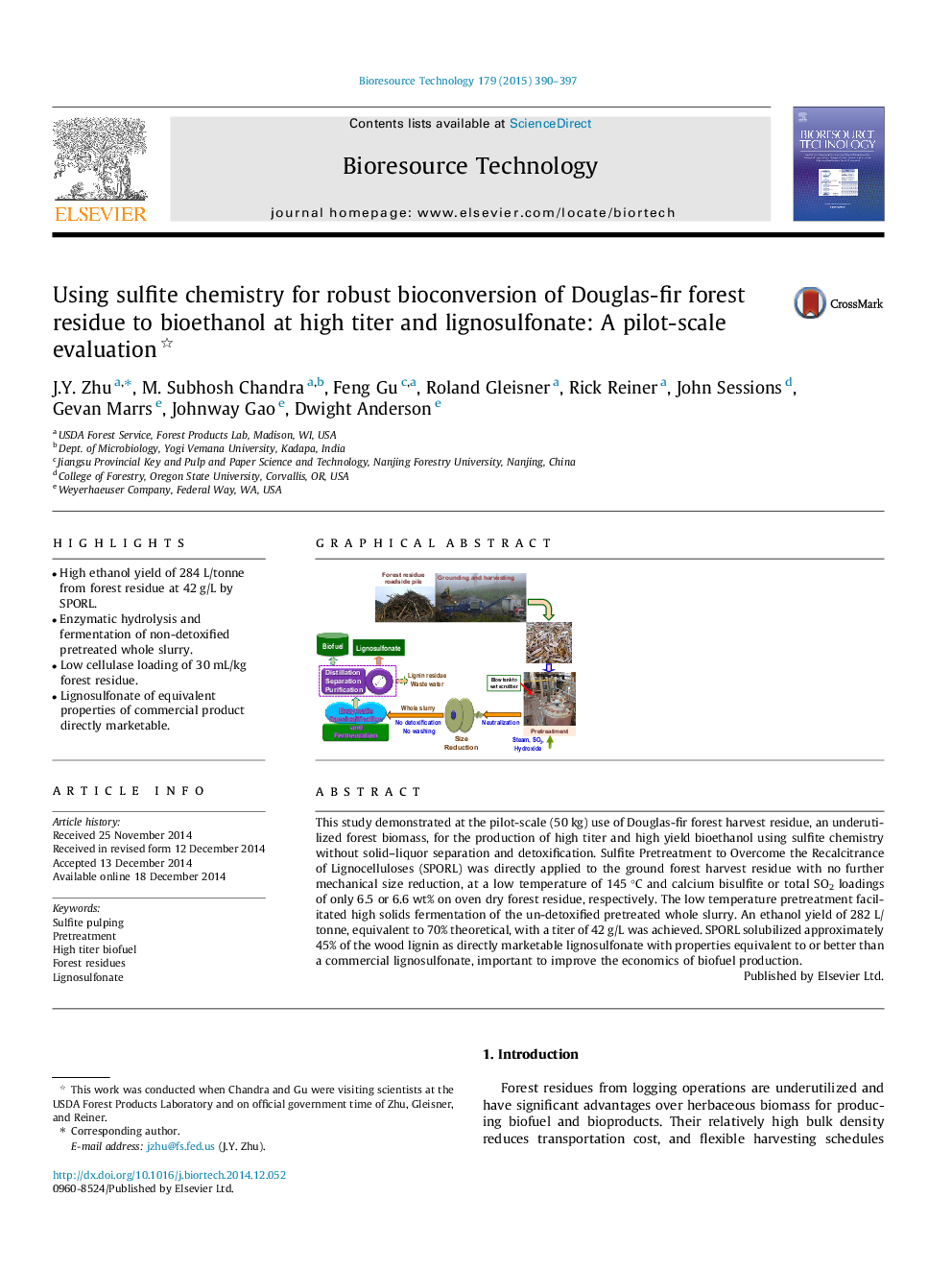| Article ID | Journal | Published Year | Pages | File Type |
|---|---|---|---|---|
| 680149 | Bioresource Technology | 2015 | 8 Pages |
•High ethanol yield of 284 L/tonne from forest residue at 42 g/L by SPORL.•Enzymatic hydrolysis and fermentation of non-detoxified pretreated whole slurry.•Low cellulase loading of 30 mL/kg forest residue.•Lignosulfonate of equivalent properties of commercial product directly marketable.
This study demonstrated at the pilot-scale (50 kg) use of Douglas-fir forest harvest residue, an underutilized forest biomass, for the production of high titer and high yield bioethanol using sulfite chemistry without solid–liquor separation and detoxification. Sulfite Pretreatment to Overcome the Recalcitrance of Lignocelluloses (SPORL) was directly applied to the ground forest harvest residue with no further mechanical size reduction, at a low temperature of 145 °C and calcium bisulfite or total SO2 loadings of only 6.5 or 6.6 wt% on oven dry forest residue, respectively. The low temperature pretreatment facilitated high solids fermentation of the un-detoxified pretreated whole slurry. An ethanol yield of 282 L/tonne, equivalent to 70% theoretical, with a titer of 42 g/L was achieved. SPORL solubilized approximately 45% of the wood lignin as directly marketable lignosulfonate with properties equivalent to or better than a commercial lignosulfonate, important to improve the economics of biofuel production.
Graphical abstractFigure optionsDownload full-size imageDownload as PowerPoint slide
